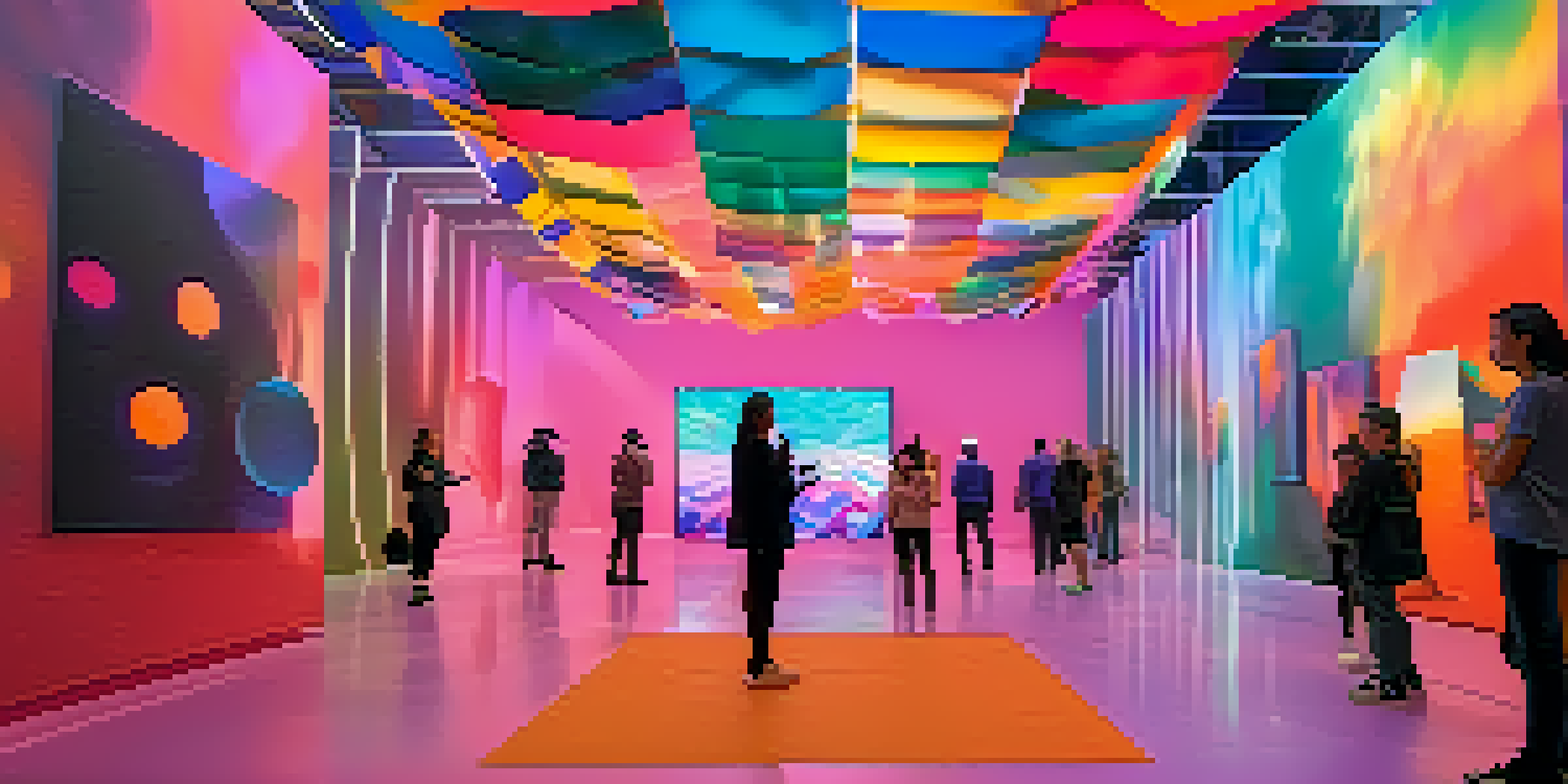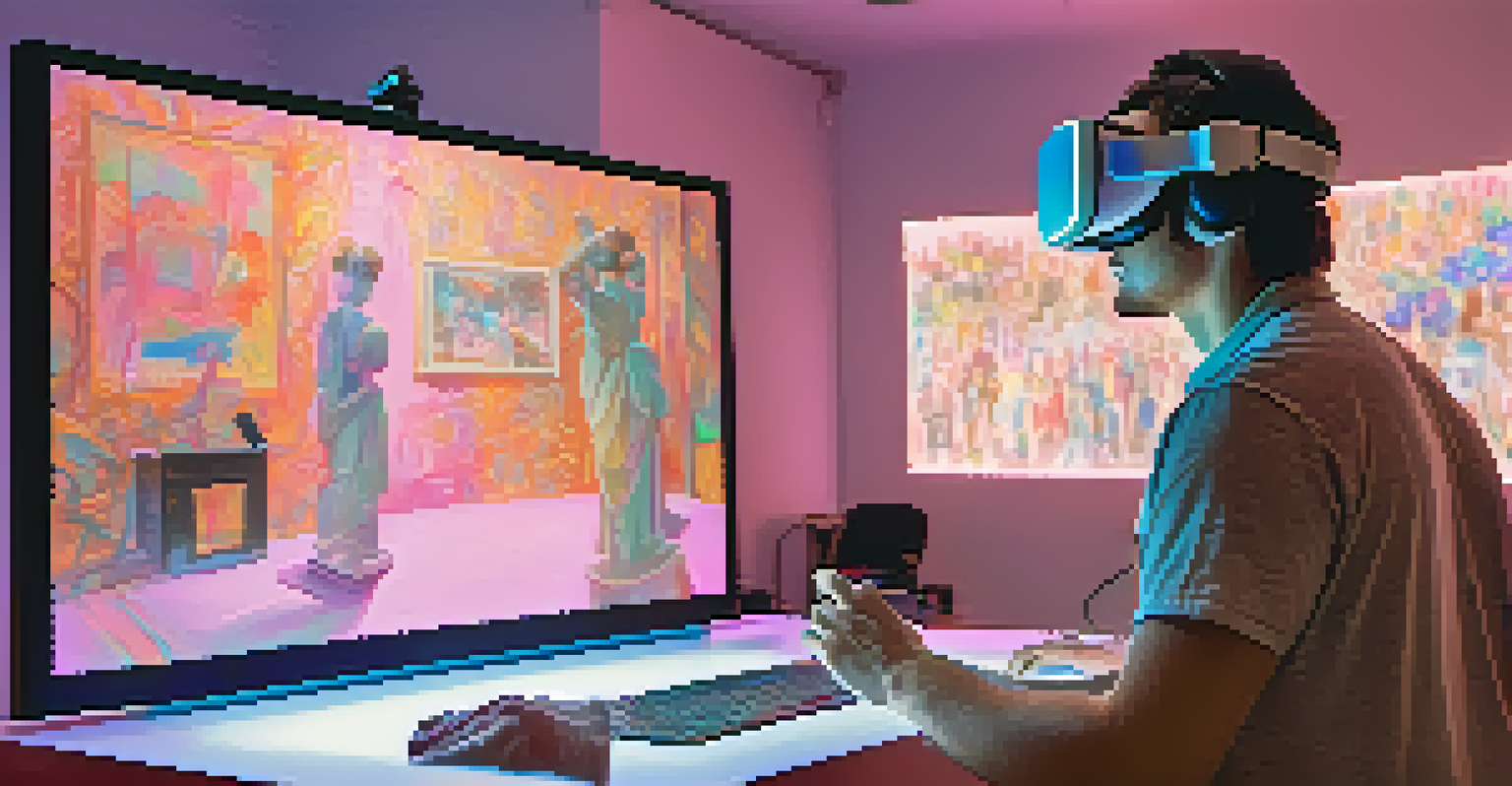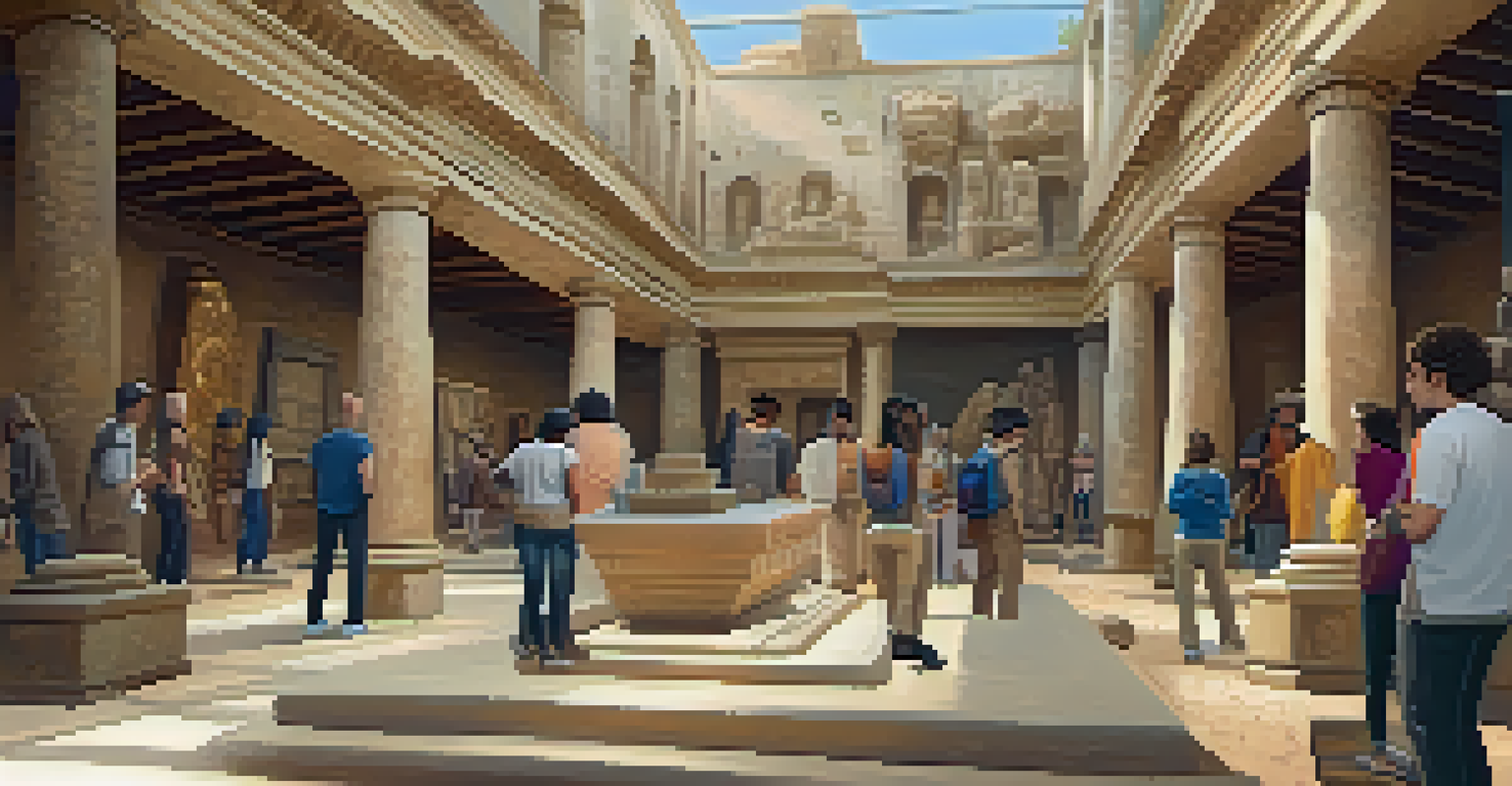The Rise of Virtual Reality in Contemporary Art Experiences

Understanding Virtual Reality and Its Appeal in Art
Virtual reality, or VR, immerses users in a digitally created environment, enabling them to interact with art in ways that traditional methods cannot. This technology captivates audiences by offering sensory experiences that engage sight, sound, and even touch. Imagine stepping into a painting or walking through a sculpture; VR makes this possible, turning passive observation into active participation.
Art is not freedom from discipline, but disciplined freedom.
Artists have embraced VR to push the boundaries of creativity, allowing them to explore new dimensions and perspectives. This evolution invites viewers to experience art as a dynamic, evolving entity rather than a static object. Through VR, art becomes a living experience, inviting individuals to interpret and engage with it uniquely.
The appeal of VR in art lies in its ability to transport us to different worlds or times, making art accessible to diverse audiences. It democratizes the experience of art, allowing people from various backgrounds to engage without the physical limitations of traditional galleries. This shift highlights how technology can enhance our connection to creativity.
The Impact of VR on Art Accessibility and Engagement
One of the most significant advantages of VR in contemporary art is its capacity to make art more accessible. Institutions can create virtual tours and exhibitions, allowing those unable to visit physical locations to experience art from anywhere in the world. This inclusivity opens doors for people with disabilities, geographical limitations, or financial constraints.

Additionally, VR offers a unique way for artists to engage with their audience. Interactive installations invite viewers to become part of the artwork, fostering deeper connections and emotional responses. This engagement transforms the way we appreciate art, as it encourages exploration and personal interpretation.
VR Enhances Art Accessibility
Virtual reality democratizes art experiences, allowing diverse audiences to engage with art from anywhere in the world.
As a result, the dialogue between artists and audiences evolves. Viewers are no longer just passive observers; they become participants in the artistic process. This interactivity not only enriches the experience but also encourages collaboration and community building among diverse groups.
Pioneering Artists and Their Innovative VR Creations
Several contemporary artists have emerged as pioneers in utilizing VR technology to expand their artistic reach. For instance, artists like Marina Abramović have created immersive experiences that challenge viewers to confront their emotions and perceptions. These innovative projects illustrate how VR can enhance the narrative and thematic depth of an artwork.
The best way to predict the future is to create it.
Another notable example is the work of Olafur Eliasson, who blends natural phenomena with technology to create multisensory experiences. His VR installations allow viewers to engage with concepts of climate change and sustainability in a visceral way, prompting reflection on our relationship with nature. Through such works, artists can instill a sense of urgency and awareness.
These pioneering figures are not just expanding the possibilities of art; they are also inspiring a new generation of creators to explore VR's potential. Their works serve as a testament to the transformative power of technology in the art world, pushing boundaries and encouraging innovation.
Challenges and Limitations of Virtual Reality in Art
Despite its many advantages, the integration of VR into contemporary art does come with challenges. One significant hurdle is the technology's accessibility; not everyone has access to VR headsets or the necessary equipment to experience these artworks fully. This limitation can create a divide between those who can engage with VR and those who cannot.
Additionally, there are concerns about the potential for VR experiences to overshadow traditional art forms. While VR can enhance engagement, some argue that it may detract from the appreciation of craftsmanship and the physical presence of art. The balance between innovation and tradition is a delicate one, requiring thoughtful consideration from artists and institutions alike.
Interactive Art Engagement
VR transforms viewers into participants, fostering deeper connections and emotional responses through interactive installations.
Moreover, the rapid evolution of technology means that artists must continually adapt and learn new skills. This could be seen as a barrier for some, as the learning curve associated with VR can be steep. However, it also presents an opportunity for growth and exploration in the artistic community.
The Role of Museums and Galleries in VR Art Experiences
Museums and galleries play a crucial role in the rise of VR in contemporary art. Many institutions are investing in VR technology to create immersive exhibitions that attract new audiences. By incorporating VR, they offer visitors novel experiences that blend education and entertainment, enhancing the overall appeal of the arts.
These institutions have also become platforms for collaboration between artists and technologists. By facilitating partnerships, museums can showcase innovative works that highlight the intersection of art and technology. This synergy not only enriches exhibitions but also encourages dialogue about the future of art in a digital age.
Furthermore, museums can use VR to curate experiences that tell stories and provide historical context. Through virtual tours, visitors can walk through ancient ruins or experience art from different cultures, all from the comfort of their homes. This educational aspect is vital in fostering a deeper understanding of art's diverse narratives.
Future Trends: What Lies Ahead for VR in Art
As technology continues to evolve, the future of VR in contemporary art looks promising. We can anticipate even more sophisticated VR experiences that blend artificial intelligence and augmented reality with traditional art forms. These advancements will likely create dynamic, interactive environments that further blur the lines between the digital and physical realms.
Moreover, we may see a growing emphasis on community-based VR art projects that promote collaboration across disciplines. Artists, educators, and technologists might join forces to create socially engaged artworks that address pressing issues, such as climate change or social justice. These projects can inspire collective action and foster empathy through shared experiences.
Future Trends in VR Art
The future of VR in art promises to blend advanced technologies, encouraging community collaboration and addressing social issues.
Ultimately, the evolution of VR in art is about more than just technology; it's about creating connections and experiences that resonate with audiences. As artists continue to experiment and innovate, the art world will undoubtedly transform, inviting us all to explore new dimensions of creativity.
Conclusion: Embracing the Future of Art and Technology
In conclusion, the rise of virtual reality in contemporary art experiences is reshaping how we perceive, interact with, and appreciate art. By breaking down barriers and enhancing accessibility, VR invites a wider audience to engage with artistic expressions in transformative ways. This evolution represents a significant shift in the art world, one that embraces technology as a tool for connection and creativity.
As artists and institutions continue to explore the potential of VR, we can expect to see even more innovative approaches that challenge our conventional notions of art. This technology encourages us to think outside the box and consider how art can evolve in a rapidly changing world. The future of art is undoubtedly intertwined with technology, leading us to exciting new horizons.

Ultimately, embracing this fusion of art and technology enriches our cultural landscape, allowing us to experience creativity in ways we never thought possible. As we stand on the brink of this new era, one thing is clear: the journey of art is far from over, and the possibilities are limitless.